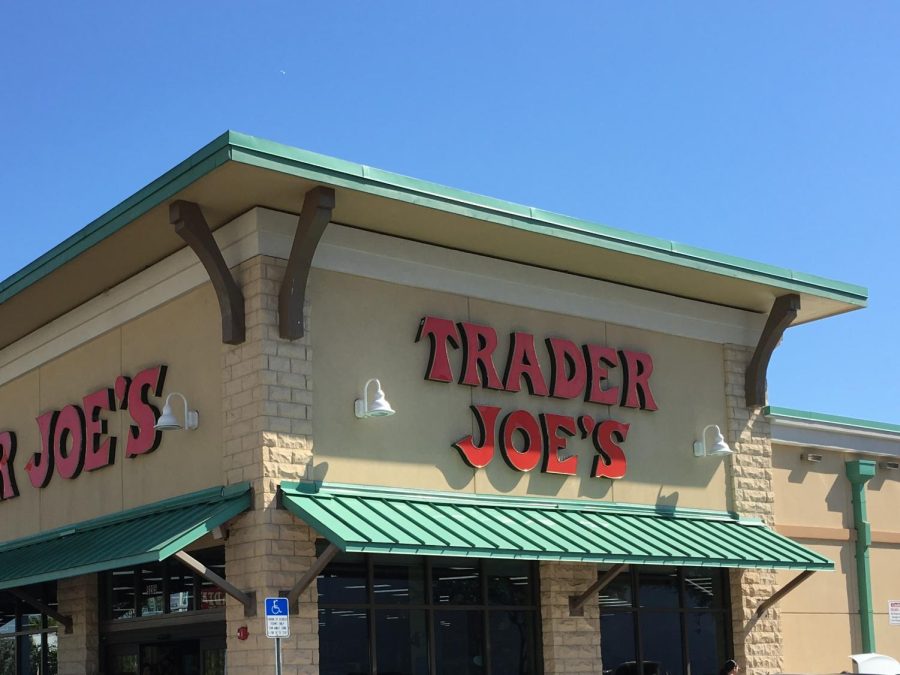A potentially historic movement is sweeping across the nation seeking to amplify the cause of workers’ rights. Labor unions have organized in recent months at rates unseen since the Great Depression.
These unions are forming at some of the nation’s largest companies, such as Amazon, Starbucks and Apple. The motivations behind these union campaigns are remarkably similar: despite record high corporate profits, workers’ wages and benefits remain stagnant or have declined. Combined with the added pressures of working in the midst of a pandemic, workers are organizing to ensure fairer treatment in the workplace.
One of the most recent iterations of this wave of unionization occurred three miles from the University of Massachusetts campus. In late July, workers at the Trader Joe’s in Hadley made national headlines for organizing the first Trader Joe’s union in the nation. As with other recent unionization efforts, the pandemic was a crucial factor.
Maeg Yosef, a spokesperson for Trader Joe’s United, highlighted feelings amongst staff that the company was not keeping up with safety protocols. In addition, Trader Joe’s slashed employee retirement benefits this past January.
All of this coincided with a sense of worth, being realized by workers across the country.
“I think it’s really become clear to us that the company can’t function without us,” Yosef said.
The increased need for labor due to the pandemic has provided workers throughout the U.S. with a significant boost in leverage, and following promises from President Joe Biden to be “the most pro-union president ever,” labor unions are seeing more favorable odds than they have in years.
This doesn’t mean that these union drives went without opposition. Companies like Starbucks and Amazon spent millions of dollars in efforts to prevent the spread of unions. In the case of Trader Joe’s, the company didn’t oppose the union drive publicly, but union employees allege that the company engaged in “coercive” behavior.
For example, many employees report being required to attend “captive audience” meetings, where employees are pulled away from their work to listen to management discourage union activity.
The difference with these recent union drives is not only that more people are attempting to unionize, but also that more workers are succeeding, in spite of expensive union busting efforts..
This recent resurgence in labor unions reversed what was a steady decline in union membership. Union density — or the percentage of unionized workers — peaked at about 35 percent in the mid-1950s and then began to decline around the 1980s when unions fell out of favor. Instead, companies began to prioritize maximizing shareholder value and minimizing worker benefits.
As of 2021, the number of unionized workers fell to 10.3 percent. The majority of this decline occurred within the private sector. The labor scholar Ruth Milkman notes that the larger losses in the private sector are likely due to greater private-sector opposition to unions and the bias within current labor laws towards employers.
“The only time that the bottom tenth of the population and the top tenth of the population have come closer together has been during [the mid-1950s through mid-1980s],” historian Ileen DeVault said. “When unions were operating in the largest corporations in this country.” When unions began to decline, income inequality began to widen.”
At a fundamental level, unions establish a democratic framework for addressing disputes between employees and their employer. In areas such as politics, many unquestioningly agree that everyone should get a say, but simultaneously accept the absolute authority of employers over their employees.
This is not necessarily the case now. A recent Gallup poll found that 71 percent of Americans support unions — the highest it’s been since 1965. However, aggressive corporate efforts to prevent unionization ensured that unionization rates remained low.
The penalties for corporations who are intimidating, coercing or firing workers in retaliation for union organization are woefully ineffective in preventing such behavior. Legislation like the Protecting the Right to Organize (PRO) Act was proposed in an effort to correct these shortcomings and strengthen the rights of workers.
These various developments constitute a unique opportunity to advance the cause of labor unions to an extent not seen in decades. Whether activists or politicians can capitalize on these initial gains has yet to be seen, but there are many things that can maximize the opportunities for change.
Democrats, for example, should renew efforts to pass pro-union legislation like the PRO Act, which was passed by the House in 2021 but has failed to progress in the Senate due to Republican opposition. But even smaller acts of solidarity can help.
“One thing students and everyone in the community can do is just come in and let management here know how excited they are to be shopping in a unionized Trader Joe’s and how excited they would be for us to win a contract,” Yosef told the Daily Collegian.
Given this unique moment in history, where unions appear to be on the rise, we should be doing everything in our power to ensure that we meet the moment and capitalize on any opportunities that may present themselves.
Benjamin Schnurr can be reached at [email protected] and followed on twitter @Ben_Schnurr.



















